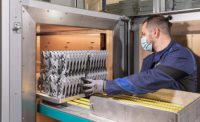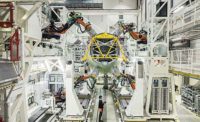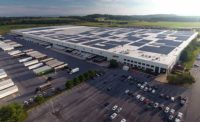Five Things: Additive Manufacturing








1 // DAIMLER PRINTS SPARE PARTS FOR BUSES
Daimler Buses is using additive manufacturing to make spare parts for vehicles on demand. The company’s Centre of Competence for 3D Printing is examining more than 300,000 bus parts to determine their suitability for additive manufacturing. Some 200 of them have already been approved. Daimler is using both plastic and metal additive manufacturing technologies to make parts that are not safety-critical, such as covers, handles, brackets and plastic caps for metal fixtures and hinges. Later this year, Daimler expects to use additive manufacturing to produce decorative items for bus interiors, such as handle inserts, side panels for coach seats, and components for folding tables.
2 // RNA OFFERS 3D-PRINTED BOWL FEEDERS
RNA Automation is using additive manufacturing to make vibratory bowl feeders. According to RNA, additive manufacturing offers several advantages for making bowl feeders, including cost savings, rapid production, flexible material selection and repeatable production. Because bowls can be produced quickly and economically, RNA engineers can evaluate bowl designs, check feeding elements, and test surface behavior. The company recently printed four bowl feeders for handling O-rings. The feeders were made from a nylon material with an anti-static additive, which helped increase the feed rate. Each feeder supplies rings at a rate of 70 parts per minute.
3 // ANTIMICROBIAL SILICONE FOR 3D PRINTING
STERNE has introduced an antimicrobial silicone for the company’s SiO-Shaping 3D printer. The silicone resists formation of bacteria both inside and outside a 3D-printed product. SiO-Shaping combines fused filament fabrication with UV curing. It can print layers as thin as 0.1 millimeter. Maximum print dimensions are 205 by 200 by 100 millimeters. The system can work with
materials with a hardness between 30 and 60 Shore A.
4 // PEKK-BASED POLYMER FOR 3D PRINTING
Stratasys has introduced a new PEKK-based thermoplastic for 3D printing. Formulated for use with the company’s Fortus F900 3D printer, Antero 840CN03 lets engineers to create custom tooling and parts with consistent electrostatic discharge performance. It’s ideal for printing heat-, chemical- and wear-resistant parts with low outgassing.
5 // $50 BILLION
The global market for 3D printing and services is expected to reach almost $50 billion by 2025, according to Statista Inc. The United States is the most important market for additive manufacturing, both in terms of production and consumption. The U.S. accounted for just under 40 percent of additive manufacturing systems installed globally.
Looking for a reprint of this article?
From high-res PDFs to custom plaques, order your copy today!










